Text
The need for green schoolyards in cities
Research on outdoor learning, especially that which takes place in green spaces, has consistently shown that kids tend to focus better, get higher grades, and find new confidence when they are in these settings. But most of today’s city schoolyards are not conducive to outdoor learning. If you visit a public elementary school in East Los Angeles, for example, you often find a barren concrete “yard” in its center. Here, there are no old trees to climb and tell stories under, no bushes to hide in during hide-and-seek, no flower beds to watch the butterflies and bees. Instead, the children who attend these public schools are often crammed into overcrowded classrooms and are forced to focus on mental tasks for hours.

La Ballona Elementary School, Los Angeles-- where I went to school for 3 years.
This is one end of the extreme. But even in more thought-out schoolyards in progressive cities in Europe, for example, one can look around and find a trend towards increasingly industrialized spaces. These environments are usually centered around a play structure, which has been cheaply produced. It usually consists of metal, rubber, and petroleum-based plastic components, which aren’t particularly good for the environment. Chemicals from plastics leach into the ground and concrete/metal elements amplify the increasingly hot summer temperatures. Although there is growing emphasis on the importance of green spaces in schools, more often than not they manifest as disconnected elements-- one tree here, another circle of grass there, etc. These are not rich, diverse spaces.

Oslo, Norway
Why is this happening? Some may argue that there’s a strong-profit motive here: laying down concrete and installing a mass-produced play structure is cheaper and easier than planting/ tending to a garden or a grove of trees. Some might actually promote these places because of their alignment with modern aesthetics. Others will point to the fact that as cities densify and more children enter schools, the schools often need to expand and do so at the expense of the size of the schoolyard. These are only a small sampling of reasons.
But we cannot afford to sacrifice these precious spaces. Rather, we should be expanding and redesigning our schoolyards in ways that facilitate close contact between children and the natural world. “Green schoolyards,” as they are known, are those with abundant natural elements such as native plants, pollinator habitats, edible gardens, and animal life suited to the surrounding biome. They can be used as outdoor classrooms, experimental sites, and as places for children to explore freely.
Recent studies have shown that children who frequently interact with nature have increased attention spans, more positive attitudes, and are able to manage their stress better (Ulrich, 1983; Kaplan, 1995). Not only this, but these children are also given opportunities to develop their own intimate relationships with nature. This is exciting in the long-term, as it’s common to hear ecologists/ biologists/ environmental stewards share anecdotes about meaningful encounters they had at a young age with the natural world. This is supported by studies showing that children who have a closer connection with nature are more likely to demonstrate “sustainable behaviors” (in this case meaning pro-ecological behavior, frugality, altruism, and equity) (Barrera-Hernández et al., 2020).
In addition to the benefits they offer individual children, green schoolyards can positively impact the communities surrounding the school. Research has found that in areas with green schoolyards, inhabitants experienced greater community cohesion and lower levels of crime (Bates et al., 2018). Furthermore, the greatest impact was in “low-income and economically-stressed communities, communities of color, and in places where access to green space is limited” (ibid). They, therefore, have the potential to further enhance municipal objectives of equality and inclusion.
It seems obvious, then, that greening our schoolyards and playgrounds is of critical importance. If we treat schoolyards as learning assets and transform them into rich, green spaces, we could expand the classroom into the yard, instead of expanding it at the expense of the yard. There are many existing initiatives to look to for inspiration: action plans for schools going through the process of transforming their yards into green spaces, volunteer organizations specifically working to install garden beds in schools, training programs that help teachers integrate outdoor learning into their curriculums, and so many more.
Thus, municipalities, city planners, policymakers, ecologists, schools, teachers, parents, and, of course, the children themselves must work together to ensure that our schoolyards are not being stolen by profit motives, densification, or sheer apathy. They are valuable investments, both for the wellbeing of children and the wellbeing of the societies they are part of, now and in the future.

Green schoolyard in San Francisco, California
Barrera-Hernández LF, Sotelo-Castillo MA, Echeverría-Castro SB and Tapia-Fonllem CO (2020)
Connectedness to Nature: Its Impact on Sustainable Behaviors and Happiness in
Children. Front. Psychol. 11:276. doi: 10.3389/fpsyg.2020.00276
Bates, C.R., Bohnert, A.M., Gerstein, D.E., (2018). Green schoolyards in low-income
neighborhoods: Natural spaces for positive youth development outcomes. Frontiers in
Psychology, 9
Ulrich, R. S. (1983). “Aesthetic and affective response to natural environment,” in Behavior and
the Natural Environment, eds I. Altman and J. F. Wohlwill (Berlin: Springer), 85–125.
doi: 10.1007/978-1-4613-3539-9_4
0 notes
Text
the web
(this was a little creative essay I wrote for the farmer whose farm I was living and working on. It was a biodynamic vegetable farm located on the Lofoten Islands, within the Arctic Circle. It was a tough, crushing spring, and we spent a lot of time inside, slowly renovating an old cow barn and having long-winded conversations. He was a Lord of the Rings fan- I was, and continue to be, a lost mid-20-something).
I can’t remember it exactly, but I think we were vaguely questioning our perceptions of reality when “sub-creation” came up in conversation. It was introduced as a concept from J.R.R. Tolkien and in the context of plant consciousness-- two realms that, to me, seem somewhat impenetrable for different reasons. Partially because of ignorance, but also partially because I think there is a limit to how far you can explore (1) the Tolkien universe or (2) the intelligence of other life forms before they get too trippy-- as in, you start projecting so much of yourself onto them that they become more like a broken mirror for your own stories.
but anyway...
Tolkien himself defines sub-creation as forming a cohesive fantasy through building worlds and creating myths. In the literary context of his “legendarium,” this refers to the idea that all of the creative endeavors of the Ainur, Elves, Dwarves, and Men in the world of Arda stem from Eru Ilúvatar, or “the One.” This is because Eru possesses the “Flame Imperishable”, granting him the ability to create existence from nothingness (shoutout to tolkiengateway.net....). So, Tolkien distinguishes between a sort of primary creation, the act of turning nothing into something, and subsequent creation, everything that happens afterward.

There is an obvious parallel here to the role of an author: a fictive writer is, indeed, the creator of an entire universe, and all the characters and actions taking place within that universe are derivatives of the author’s efforts.
But the author creates because they are created themselves. And indeed this aligns with Tolkien’s theology, as he was a devout Catholic and therefore believed that he was created by God. Thus, in his efforts as a writer, Tolkien embraced sub-creation as a form of worship, a way for creatures to express the divine image in them by becoming creators themselves. (David C. Downing. Sub-creation or Smuggled Theology)
So, is sub-creation only conceptually interesting for a religious fantasy writer? I think there are two main questions to be answered here, and I will try to loosely address them in this text. The first is: can the idea of sub-creation transcend theology? And the second is: can it offer a way to find meaning in the human experience?
....
And so we begin with Humanity’s Biggest and Baddest Question: “Who or what is our Eru?” or, in other words,
“How did we get here?”
The question that has started wars, divided people, been the greatest source of angst and/or bliss, the unanswerable question, the question that is somewhat miraculous even in its ability to be thought...
Is it indeed an old white man with a long beard and flowing robes, sitting upon a throne of sky and stars? or perhaps a cosmic turtle, carrying the world on its back? or maybe all life and matter are just the consequence of an extremely small and dense point exploding 13 billion years ago?
Is this question just an answerable case of infinite regress (the idea that everything that exists is contained within something else)

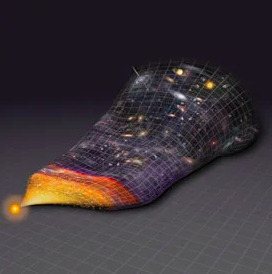
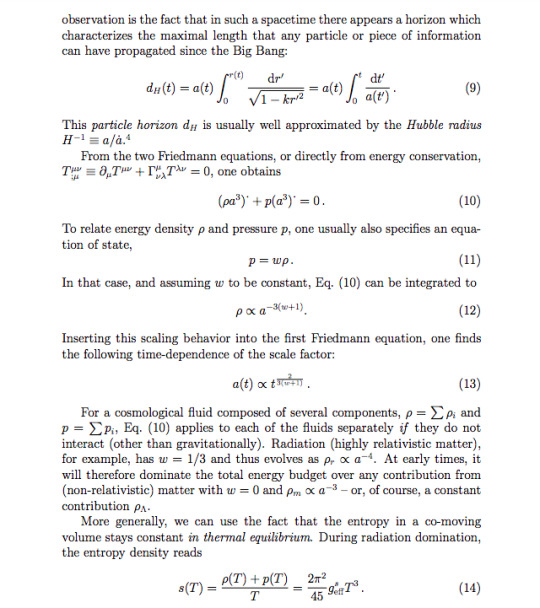
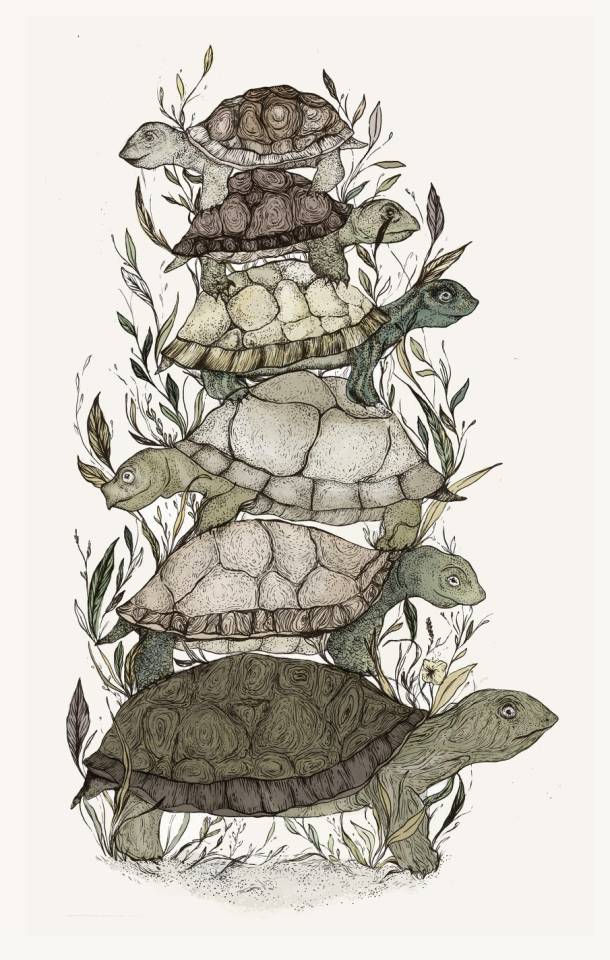
(Before I continue I feel like I need to make a disclaimer that I am quite ignorant when it comes to both philosophy and world religions. I make some big generalizations in the following musings, and I tried to combine what I already know with a little bit of research, but I will just try to humbly acknowledge here that I don’t really know what I’m talking about. But it’s kind of fun to be in that position. )
I was not raised religiously and I don’t align myself with any one faith or text or dogma (even you, science). But I do intuitively believe that material life is like a great drama, with many characters all playing their parts of mother, father, child, friend, enemy, sinner, saint, etc. I also believe in a “capital-C” Creator in some sense, or an original force of creation that is imbued in every atom vibrating in this universe. I feel that everything is alive, and communicating, and we humans are little mirrors of the greater Being (verb not noun), shining back small reflections of unfathomable greatness, pain, destruction, bliss, unity, difference, ecstasy...... something like a bigass disco ball. maybe the universe is just endlessly fractaling disco balls, and the supposed duality between “Creator” and “created” is irrelevant and there is no sub-creation, no succession at all; indeed, only creation. Maybe.
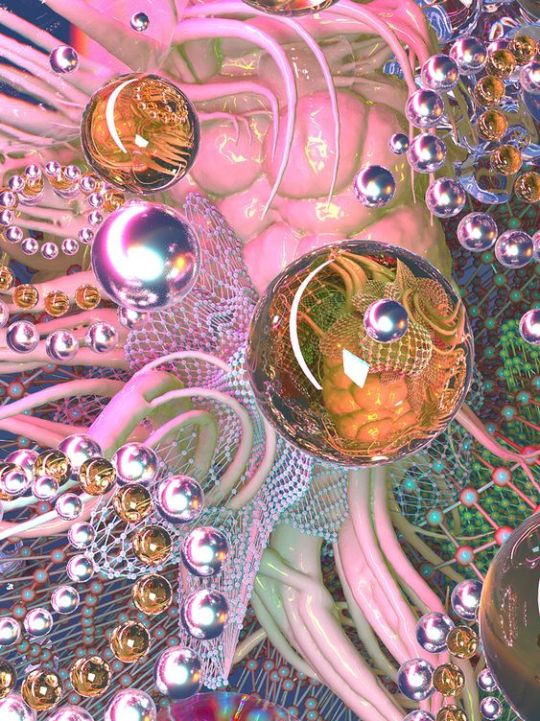

I could segue this entire essay into a discussion on non-duality as a philosophy and try to argue whether the idea of sub-creation aligns with or opposes it, but I won’t.
So I just take some and leave some from Tolkien’s concept.
As I understand it, Tolkien sees the primary creator (whether that be Eru or his Catholic God) as pure perfection, the vessel of all goodness, abundance, and vitality, and, as was already mentioned, the only one with the ability to make conjure existence out of nothing. Any subsequent creation, like man for example, will therefore never be able to replicate this complete perfection, but will instead “reflect a splintered fragment of the true light” (his words). And so, only by building worlds and creating myths can humans aspire to reveal/identify this light embedded in their own existence.
I think atheists and non-atheists alike can agree on this at least: that all sentient and non-sentient beings are a product of some sort of immaculate conception, whether that be the Big Bang, or the decree of Allah/God/Brahma/etc, or the hatching of a great egg.
But the agreement ends when it comes to whether or not this has an impact on human nature and the nature of all living things.
In Hinduism and Buddhism, for instance, human nature is seen as related to divine nature, and the main task for human beings is the overcome the perception of individuality and become part of All That Is. Taoism further emphasizes the importance of cultivating “chi,” or our life force, through living in harmony with nature in order to enter the kingdom of heaven and gain eternal life. In Semitic religions like Judaism and Islam, the Self is thought of as distinct from and dependent on the divine; therefore it is important to live in gratitude and obedience toward God. Any disobedience, or sin, is not necessarily rooted in human nature, but must be corrected. In early Christianity, humans are seen an embodied image of God, but one that requires the “continuous creative activity of God,” without which they would return to earth, or dust. ("Human Nature, Religious and Philosophical Aspects ." Encyclopedia of Science and Religion.) However, around the 4th century CE the Christian Doctrine of original sin emerged, which holds that humans are born corrupted by sin as a result of the fall of Adam, and that “wickedness is a property of the human heart” (“What is the Biblical Evidence for Original Sin?” desiringGod.org). Despite this, some denominations of Christians, like many Quakers, believe in the doctrine of “inward light,” which holds that God is in everyone and that humans are inherently good.
Very briefly I will just add that various philosophical and scientific trends throughout history have then added to/erased/replaced these understandings of the human condition. And along with them, there has also been evolving understanding of the nature of the non-human world, sentient or otherwise. Some beliefs hold that humans are irrevocably superior to all else because they contain a soul, which others may extend the concept of a soul to some or all of the non-human world. A 2011 study investigated whether different cultural and religious groups were more likely to ascribe personhood to non-human entities such as fire, angels, robots, bears, dogs, fetuses, and deceased humans. It found that while American Indians were likely to think of fire, bears, and fetuses as persons, Atheists were likely to say that robots and dogs were persons, but fetuses and angels were not (Adam Cohen. 2011. Religion, Culture, and the Personification of Non-human Entities.)
This is all just to say that there are many different answers to the question of how we got here, and what implications it has for our existence. And I think answering the how begins to illuminate the answer to the why? why are we here, why do we have a consciousness that allows us to contemplate mysteries such as these? why do we have a world that looks the way it does, with all of its suffering and beauty, diversity and connectedness?
I want to spend some time with the ideas of world-building and myth-creating as ways to understand our collective reality, but simplify them even more to structure and story (partially just for the alliteration). I think you can look at just about anything through the lens of structure/story, and they are inextricably linked; a real chicken-or-egg situation...
*it’s the figures and tales we have projected onto the configurations of stars in the night sky: the bull, the water bearer, the great bear, and so on
*it’s the prison walls that hide away what a particular society cannot tolerate, whether that is acts of cruelty, taboos, people of a certain race....
*it's the Ganges river, full of bodies that are not even entirely cremated because there are too many other bodies piled up on the shore, waiting for their rite of passage
*it’s the bathroom stall, scribbled over with tags, political slogans, and love notes
*it’s the bed where, under the covers, the first “I love you” is tentatively whispered
It's the bathhouse, grandma’s kitchen, the office elevator, the playground, the parliament chamber, the country borderline, it’s a deserted island, it’s Hong Kong, it’s the cup you always use, it's the photo you can’t look at anymore, the small mementos you carry around with you from place to place.......
It’s peace, war, reconciliation, fear, inspiration, justice, play, nostalgia.......
When I think about structure more, I see it, in its most reductionist form, composed of bonds and spaces///matter and void. Take soil as an example. In Regenesis, George Monbiot explains a recent “Theory of Soil” proposed by scientists in 2020, which is essentially that soil is composed of “structures within structures within structures” (23). tiny particles are stuck together with carbon-based polymers, or cements, that microbes excrete; as creatures of all sizes (earthworms, fungi, bacteria, mites, etc.) colonize and move through/establish themselves in the soil, they create holes of different sizes, into which water and chemicals released by plants and animals can flow. This complexity is multiplied by time, as more and different species wriggle their little bodies around, and the result ends up being, in Monbiot’s words, an “endlessly ramifying catacomb” (24). The most interesting part, to me, about Monbiot's musings on soil, is when he mentions fractal scaling, and says that the structure of soil is consistent at any scale of magnification.

Fractal scaling and this image of a complex, growing catacomb makes me immediately think of bread dough and models of the universe. In the words of Seamus Blackley: “rising dough is actually a pretty good analogy for the expansion of the universe; every little bit of flour in the dough is getting farther away simultaneously from every other bit of flour all at the same time. This is what the universe seems to do. Weird huh?” (Twitter)
There is also a popular analogy in cosmology that compares the way that galaxies move in our expanding universe to the way that raisins move in a rising loaf of raisin bread.
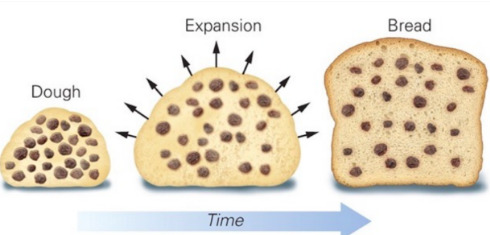
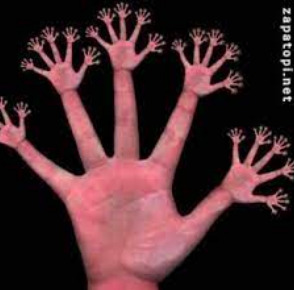
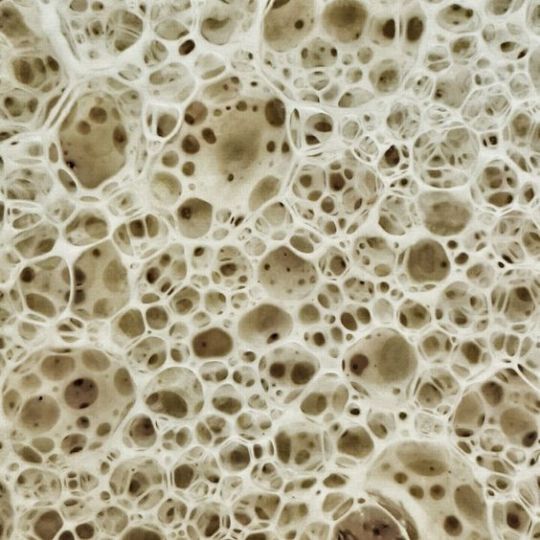

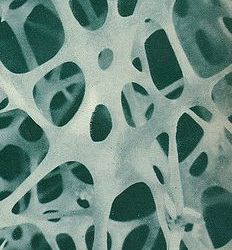

when I think about stories, the first things that come to mind are obviously religions, folklore, myths.....etc. In some ways, these are like structures because they are also bonds and spaces, in the sense that stories are merely people/places/ideas plucked out of the infinite imagination and woven together like tapestries. Different cultures have different conceptions of what a story is, and the acceptable amount of deviation from logic or temporal/spatial linearity can vary. But what is consistent is that stories change and evolve.
Take the environmental movement in the US, for example.
It is an amalgam of stories driven by religion, racism, ethics, profit, science and so on, and serves as an illuminating example of the inseparability of knowledge and power. (Like Foucault says, society’s dominant narratives are always embedded in power relations, and how consequently, those with the upper hand will have more say in what ideas and stories, or discourses, become mainstream.)
One specific story that we can explore further is the construction of wilderness and the “pristine myth” in North America. Influenced by biblical doctrine, early Europeans equated wilderness with the unknown and saw it as something to be feared; but by the time the first colonists invaded the Americas, wilderness had been ideologically transformed into something representing bountiful resources and requiring human stewardship. Colonizers dehumanized the indigenous peoples of North America and trivialized their relationship with the land, as they believed that “forests were wild because Indians and beasts lived there, and Indians were wild because they lived in the forests” (Hopson, 2011). This provided justification both for interfering with the physical landscape and driving indigenous people out of their territories.
However, in the middle of the 19th century, on the edge of the civil war and in a period of cultural insecurity, Americans began to revere wilderness as a symbol of moral purity and stability. There had also been years of rampant destruction of nature through logging and hunting, and people were beginning to see the negative effects of this. This laid the foundation for the transcendental cultural movement that later inspired John Muir who, along with Teddy Roosevelt, sequestered millions of acres of land to create the first national parks, Yellowstone and Yosemite. Doing so, though, required the forcible removal and exclusion of the land’s native inhabitants. These were people who had cultural and spiritual ties with the land and who, contrary to the narrative of the “Noble Savage Myth,” had been altering the landscapes for hundreds of years through slash-and-burn cultivation, hunting, etc. The persisting myth of wilderness in North America, codified in the 1964 Wilderness Act, has consequently excluded indigenous people from land in order to preserve it for the recreation of others (i.e. white middle-class people, whom the parks were created for in the first place), and has become the ideological foundation of American conservation efforts both domestic and abroad.
Therefore, it is crucial to question and interrogate our own stances, the narratives we buy into and perpetuate on a daily basis, and consider what new stories can be told in order to create a more equitable, just world.
Now, maybe a lot of what I have written so far is a bit disjointed and hard to follow. Maybe you’re asking “where is this all going?” (I have asked myself the same question several times throughout the writing process, that’s for sure).
But to me, all this talk about religion and human nature and structure and story comes back to the fact that I think, as humans, we are all trying to find a glimmer of purpose in this life. Regardless of whether you think there is no objective reality and we all live in a simulation of some sort, or that we are splinters of a very tangible divinity, or the product of a funny little physics experiment, we were all granted the ability to ponder each of these possibilities and align ourselves with one that fits our view of the world. This is a gift and a curse, and up to us what we do with it.
And if we really look around us, at all the other species we share this planet with, at the clouds and stars above us, and the leaves falling down around us, we see that movement, change, growth and decay are the universal truths. Even mountains, seemingly immutable giants, are dancing -- they just dance on a different time scale than us. To the mountain, we are like small ephemeral insects, zooming around at a sped-up pace, growing, fucking, reproducing, and dying.
And here, on the farm, we are trying to create a little microcosm of life. We try to observe and interact with nature as our great Teacher, and practices like permaculture and biodynamics can offer a methodology for doing so. Where possible, we use the gifts of the land-- from seaweed to sand to green material and wild edibles. We try to understand the structures all around us (soil, plant morphology, water systems, microclimates, etc.), and try to chip away at some of the most harmful stories in agriculture (yield and profit > quality of produce and health of land, etc.) and build up new, beautiful ones. While farming fundamentally requires us to manipulate land for our benefit (growing food and other crops), it also gives us an opportunity to maximize its potential for providing habitats to other species, collecting rainwater, storing carbon, and overall becoming more diverse. And diversity offers resilience, especially as we face unprecedented times ahead.
Leaving a piece of land better than I found it is enough to let me lie easy on my deathbed.
We are immersed in the ebbing tide of Life and Death and Life and Death and Life again. Transformation. Alchemy. The story of resurrection. If God or Creator is imbued in every living and non-living being, if even just as a splintered fragment of light, then connecting with as many of these as possible gives us ample opportunities to see this light and get to know God/Creator/Source/etc. better. There is magic in each and every one of them, in the niches they occupy, and in the greater systems they are a part of. And then we realize that it’s all one massive beautiful web, and us humans are just one shining dewdrop upon it.
References
“The Subcreation Theory of J.R.R. Tolkien” https://gwern.net/doc/fiction/science-fiction/2015-mirante-thesubcreationtheoryofjrrtolkien.html
“Regenesis” by George Monbiot, 2022.
“Human Nature, Religious and Philosophical Aspects” https://www.encyclopedia.com/education/encyclopedias-almanacs-transcripts-and-maps/human-nature-religious-and-philosophical-aspects
“What is the Biblical Evidence for Original Sin?” https://www.desiringgod.org/articles/what-is-the-biblical-evidence-for-original-sin
María Del Rincón Yohn (2021) J.R.R. Tolkien’s sub-creation theory: literary creativity as participation in the divine creation, Church, Communication and Culture, 6:1, 17-33, DOI: 10.1080/23753234.2021.1886860
1 note
·
View note
Photo

Red-eyed tree frog (Agalychnis calladryas) eggs four days after being laid. By Christian Ziegler.
30K notes
·
View notes
Text
Notes for a hopefully forthcoming piece on Digital Activism
The hope for the internet was that it would become the new democratic stage.... Was this ever true? Is there still hope for this today?
* Aaron Schwartz: hacktivist, computer programmer, political organizer, co-founder of Reddit, contributor to the Creative Commons liscensing initiative, possible contributor to WikiLeaks
--> Guerilla Open Access Manifesto https://ia600101.us.archive.org/1/items/GuerillaOpenAccessManifesto/Goamjuly2008.pdf
*Elon musk and the twitter takeover, twitter being one of the largest dialogue spaces (albeit with massive limitations and shortages-- got us deep into soundbite activism)
*3D printed guns, Jstark and Deterence Dispensed-- trying to create open-source, downloadable guides to 3d printed guns that anyone can make (as long as they have a few hundred dollars and some relatively common/legal-to-purchase metal parts). believe that the right to bear arms should not be
* open source code and software
* https://github.com/drewrwilson/toolsforactivism
*((All watched over by machines of loving grace - Adam Curtis))
0 notes
Photo
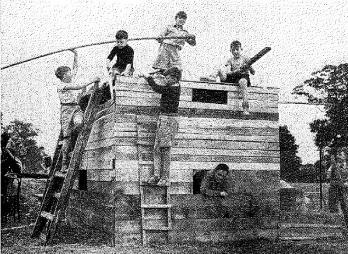
Notes for writing about schoolground design
“Bughole cave”
I think a critical lesson for kids to learn as early as possible is that they have power to influence/change/design the world around them- it is not fixed, it not always entirely purposeful, and it many times does not have their interests in mind...
(This is true for everyone but is, of course, most pertinent for kids/the elderly/people with different levels of mobility/etc.)
In an educational setting, it could be interesting to purposefully create a classroom with inefficient or awkward seating or storage spaces (ex cubbies) or something along those lines, and ask the kids to come up with ways to improve it, based on their own daily interactions with the physical space, with each other, and with the entire context of learning.
ADVENTURE PLAYGROUNDS!
* examples from Emdrup playground in Copenhagen.
*anarchist theory from Colin Ward’s essay
Again, referring to Escobar’s “Designs for the Pluriverse,” this can be part of the process of transforming design from “an expert-driven process focused on objects and services within a taken-for-granted social and economic order” into “practices that are participatory, socially oriented, situated and open-ended and challenge the business-as-usual mode of being, producing, and consuming.”

Or perhaps, in simpler words, getting the kids involved in the design process and respecting them as true collaborators. This requires a large social shift in how much autonomy we give our children though. (bell hooks on love has some interesting things to say about this..)
0 notes
Text
Biomimicry or biomockery?
The principles of biomimicry design are often described as follows:
+ always maximize resources
+ use free or abundant energy sources
+ be multifunctional
+ waste= resource
+ localize sensing and adaptation
but in theory, it has no intentional or direct impact on aesthetic aspects of design. However, there is definitely a certain “look” associated with biomimicry these days (think geodesic domes, spirals, earth tones) and this can, and often is, easily co-opted by designs that don’t follow any of the above principles .....


There’s an interesting history of drawing inspiration from nature (in these cases, from morphological aspects of a particular species) to create tools that operate in a way that either harm nature or is otherwise act in opposition to nature. For example, barbed wire was designed after the Thorny Osage Orange Hedgerows. It was patented in 1868 by Michael Kelly in response to the needs of settlers in the US who were moving West after the Homestead Act was singed in 1862, to protect “their” “property” and enclose livestock, etc.

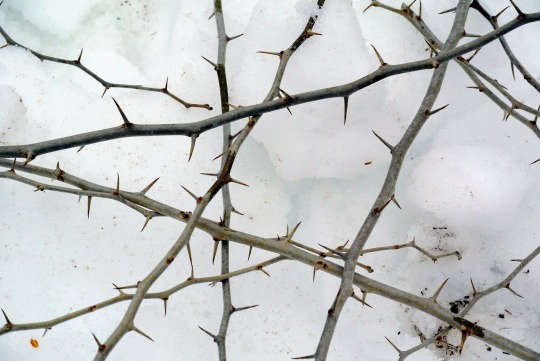
Beetle mandibles were also the inspiration for modern chain saws. There is a bitter irony in using a species that often lives in trees and particularly dead wood, as a reference for a tool most often used to cut down trees, living and dead.


In my search for other critiques of this aporia of biomimicry design, I found a post by Talley Summerlin on his blog Creative Species, in which he uses the term “biomockery” to describe “innovations based on nature’s lessons and guidance that are used for ill (i.e. weaponry, poison, habitat destruction, havoc-wreaking, and general death-dealing).” ((Link to the post: https://creativespecies. wordpress.com/tag/biomockery/)). We have to ask ourselves: when a seed, a vessel of life, is used to inspire the design of a missile, a vessel of death, how can we possibly claim to be acting in accordance with nature’s principles?
Biomimicry is a relatively new iteration of the design world, and even it is not free from the influence of patriarchy, and its need for domination over/ control of that which is deemed inferior. Arturo Escobar makes the point in “Designs for the Pluriverse” that patriarchy is an active historical reality, not a thing of the past and patriarchal ways of being are central to the historicity of our being-in-the-world at present. This is to say that design does not happen in a vacuum and that, to quote Susan Stewart, “ the excision of history from design thinking isolates the understanding of the design act from any understanding of the temporal trajectories in which it participates.” So we need to work towards a design imagination that goes beyond the ontology of separation that thrives on hierarchy, competition, aggression, and the control of humans and nature.
How? Well, maybe we can look to adventure playgrounds as a starting point of inspiration... (next post!!)
---
0 notes
Text
november 3. 2022
disillusion versus delusion versus illusion
disillusion: disappointment resulting from the discovery that something is not as good as one believed it to be. capitalist paradise is actually a hellscape for the majority; “collapse-aware”
delusion: idiosyncratic belief or impression maintained despite being contradicted by reality or rational argument, typically as symptom of mental disorder. capitalism is the most logical and democratic system, that promotes innovation and hard work.
illusion: an instance of a wrong or misinterpreted perception of a sensory experience. I feel sick purely because of an innate chemical imbalance, and it has nothing to do with the fact that the environment and the society I live in is sick.
0 notes
Photo
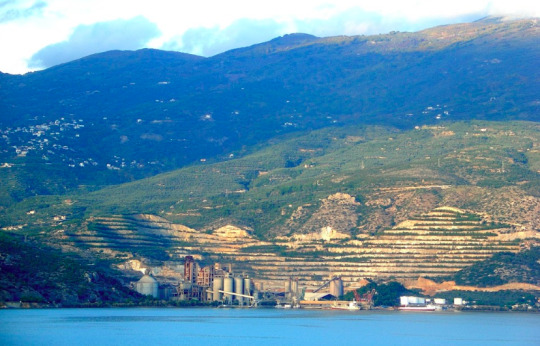
Volos, Greece
Volos is a coastal city in central Greece and home to AGET Heracles, the largest cement factory in Greece and one of the largest in Europe. In 2014, AGET was granted a permit that allowed them to burn up to 200,000 tonnes of “alternative fuels” to use in cement production. These were mostly RDF, Refuse-Derived Fuel, AKA energy coming from the incineration of trash (particularly trash that cannot be otherwise recycled or reused). Of course, the factory and the broader cement industry tries to greenwash initiatives like this, claiming that they are limiting emissions by using a non-primary material as an energy source, and limiting the amount of waste going into landfills. Furthermore, cement factories receive state-funding for burning alternative fuels like RDF AND SRF, making it an extremely profitable enterprise.
But obviously incinerating trash does not reduce emissions and there are serious consequences of burning hazardous industrial waste and certain types of plastics, for example. These turn into harmful air pollutants that disperse and affect all living organisms. The likelihood of hazardous materials being mixed into non-hazardous waste and incinerated indiscriminately is exacerbated by geopolitical dimensions. This is because the trash that AGET incinerates to generate power is not from local areas, but is actually primarily imported from Southern Italy, an area with extensive corruption and mismanagement within the waste industry (I made a short post about the consequences of this in the Campania region a while ago). The company that owns the cement factory, LafargeHolcim, has even acknowledged themselves that they cannot confirm whether the fuels they produce are from hazardous or non-hazardous waste.
Considering that the cement factory is less than 200 meters from residential areas, it’s no surprise that local inhabitants are facing serious health threats. From an article titled “Greece: Air, Water, and Democracy:”
“According to a June report by the research team at the department of Mechanical Engineering of University of Thessaly, an increased presence of the dangerous air pollutant PM2.5 was detected in the air in Volos, exceeding WHO’s standards by 200% and Greek legislation by 20.12% during the 12-month monitoring period. A recent morbidity and mortality study by the medical school of the University of Thessaly showed a significant increase in cases of some types of cancers as well as strokes in Volos and the wider region of Magnesia compared to rest of Greece’s average, without however clarifying the causes.”
There is now discussion of a new plant being created in Volos, for Solid Recover Fuel, or SRF. This plant was proposed partially in response to people’s worries about importing trash from places like Southern Italy (as well as Spain and even Morocco) and the fact that the quality of this trash is often unknown (containing hazardous materials, etc.). This plant would therefore process local trash. However it has a significantly smaller capacity for producing SRF (18,000 tonnes per year) than the capacity that AGET has for burning (200,000 tonnes), so it is most likely a scheme to siphon government funds into the pockets of the plant owners, while continuing to import trash to meet the demands of the cement production.
.....
There are also local struggles in Volos against the privatization of water sources and towards establishing a more transparent and democratic administration.
Another final note is the connection between this situation in Volos and the death of a young anarchist activist, Vasilis Maggos. Maggos was at a demonstration against AGET and its pollution on June 13, 2020, when ten police officers brutally assaulted him, breaking seven of his ribs and damaging vital organs, subsequently locking him up and humiliating him. A month later, he was dead and his family maintains that it was because he succumbed to his injuries inflicted by the police. Yet again, we see to what ends the elite will go to in order to protect their capitalist paradise... in this case using state-sanctioned executioners to violently crush peaceful protests, in which people express their desire for a life in which they are not being poisoned, stolen from, and used as mere expendable pawns in the game for profit. ......
https://www.pressenza.com/2022/07/building-the-trail-of-optimism-in-volos-greece/
https://www.balcanicaucaso.org/eng/Areas/Greece/Greece-air-water-and-democracy-203623
0 notes
Photo




Posidonia Oceanica, or Neptune’s Grass
Also known as the “lungs of the mediterranean,” p.oceanica is part of the broad category of marine seagrasses, of which there are over 70 species clustered in different families. these seagrasses re-entered the sea around 100 million years ago, and can now be found across the world, from the Arctic to the tropics, often growing in lush, verdant underwater meadows close to the shore. P.oceanica in particular is endemic to the Mediterranean sea. It is a flowering plant, reproducing through seed dispersal, and produces small, free-floating fruits that are known as “olive di la mer” (olive of the sea) in Italy. I would love to find more information about the potential edibility of these fruits and the plant, in general, but it seemed like there wasn’t much.
Seagrasses provide a variety of critical ecosystem services (anthropogenic and otherwise), including:
* habitats for various species
*critical part of marine food chains
* prevent coastal erosion (due to proximity to the shore) and dampen effects of storm surges.
* absorb tons of carbon dioxide and, in turn, provide oxygen.
P.oceanica in particular covers more than 1 million hectares of seafloor in the Mediterranean, which is incredible given the fact that 1 single hectare of the plant is capable of absorbing 15 times more carbon dioxide than a similar-sized piece of the amazon rainforest. (there’s a source for this somewhere)
But one very interesting aspect of these plants is the fact that when there are storms, parts of the grass get ripped off and eventually become balls of plant material that end up on the shore. These are known colloquially as “neptune’s balls.” Researchers have discovered that by the time they reach the shore, these balls are often filled with plastic particles-- particles that would have otherwise remained in the ocean. They estimated that up to 867 million pieces of plastic are potentially being captured by seagrass each year.

There was also an extremely interesting article about the potential uses of neptune’s balls as a sustainable building material, particularly as insulation. they have very low flammability, don’t rot easily, protect against electromagnetic radiation, and have something something high thermal index (??)--higher than wood.
cool potentials for using a material that cleans up its own oceans
of course, like every other goddamn species alive, it is at risk due to human activity (anchor dropping, coastal development, increased nutrients in the water) and climate change (it has a upper thermal limit ((28C??)) that has been surpassed during half of the summers between 2000 and now).
0 notes
Photo

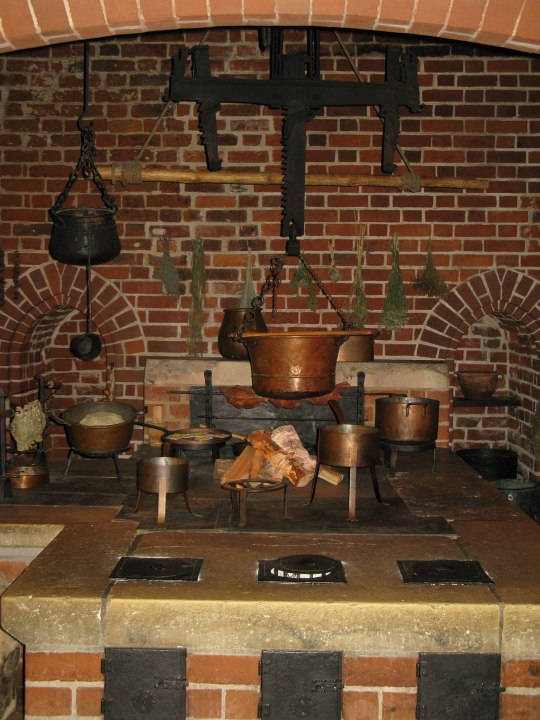
Notes on: the evolution of the kitchen
As someone who admittedly often takes the design of physical spaces for granted, I haven’t bothered to learn more about the room that I probably spend the most time in (other than my bedroom, which claims dominance purely because of the unavoidable need for sleep) -- the kitchen. in my search for a master’s program in food anthropology just now, however, I stumbled upon the syllabus for a course offered at Harvard called “anthropology of food and foodways.” One assignment was labelled “kitchen versus campfire,” which i proceeded to type into google and then open the first link that came up, from a homesteading website.
i’ve now conveniently decided that this is the perfect time to return to this abandoned blog and write a small blurb on the history of the kitchen. i swear I’m not procrastinating trying to plan out my future or stave away the feelings of loneliness that are nipping at my heels.
hehe
so, some brief etymology:
the english words “cook” and “kitchen” come from the same latin root: “coquere,” to cook.
from merriam-webster: The connection between coquere and cook is easy to see, but kitchen has a more involved history. From the verb coquere came the later Latin noun coquina, meaning “a kitchen.” With some changes in pronunciation, coquina came into Old English as cycene. This became Middle English kichene and finally modern English kitchen.
barbara bamberger-scott asserts from this that, the kitchen as we know it grew up in Europe. Of course, the earliest kitchens were, in fact, fires. Food preparation and eating, like everything else, was done outside. However, even when various forms of shelters came along (tipis, yurts, lean-to’s, huts, houses) the cooking was still done outdoors.
…
it was only with the advent of electricity that the kitchen really came into its own
….
today our kitchens are characterized by kitchen appliances that purport to make our lives ever more efficient and easy. of course there’s are microwaves, dishwashers, rice cookers, etc. but in the last two decades or so, there has been an explosion in the marker for kitchen gadgets with increasingly specific uses. this includes small picks to stab either end of our ear of corn with, fancy (expensive) “juicing” machines that squeeze out pre-blended packets of juice (sold separately), tupperware made to fit one kind of fruit or vegetable, and on and on. the Facebook group “did silicon valley reinvent the wheel again” is a fun place to look when you forget how utterly untrue the statement “capitalism breeds innovation” really is. :)
…
honestly I’m too anxious and can’t really be bothered to read more about something i don’t really have any prior knowledge about, and can’t really bring myself to care too much about right now. so i will end this post here and hopefully return to it when my brain doesn’t feel like its filled with helium. ciao
0 notes
Photo
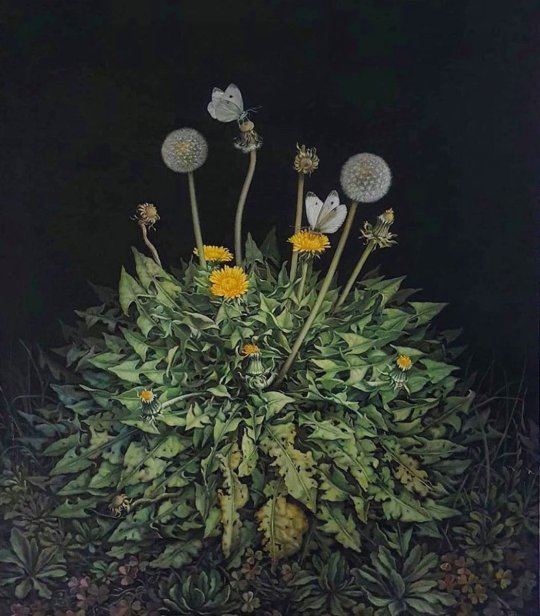
More-than-Human Intelligence
We, as humans, are not very good at recognizing other ways of being/other forms of consciousness. It is something being taught out of us.
We have detached ourselves from our vegetal aspects, our relation to plants. We think of movement as change in place. But locomotion is only one type of movement. There is the movement of growth, decay, metamorphosis. What would it mean to rethink physical + political/social movement according to these kinds of movement?
What if aliens came to Earth and there sense of time was far more sped up than humans, so they thought that humans weren’t sentient beings and completely exploited and ate them?
There are so many opportunities for intelligence to manifest in ways we cannot recognize...time scales other than our own, senses we don’t posses, and holistic systems beyond our grasp
0 notes
Photo




( All images by Yvonne De Rosa)
The Triangle of Death
The morbidly named triangle is made of up the Acerra, Nola, Marigliano, three communi just north of Naples, Italy. It is within the broader region of Campania, of which Naples is the capital. Today, it contains the largest illegal waste dump in Europe, which poses severe health hazards for the surrounding population. Some landfills are entirely within Vesuvius National Park, like the Cava Sari Landfill.
Since the 1980s, tons of waste from the rest of Italy has been dumped in landfills in Campania- some legal and others illegal. Illegal burying of toxic waste was common during this period, as industries in Northern Italy paid off corrupt government officials to allow this without resistance.
The first state of emergency was declared in 1994, and the Committee for Waste Emergency in Campania was formed as a response. Prior to that, there was no regional waste management plan in place, and the Camorra criminal organization (mafia based in the Campania region) had taken advantage of this.The emergency that began in 94 was declared “over” in 2008, as ecobales of waste were either incinerated or shipped to the Netherlands/Germany. But trash began to pile up in the streets again, and another emergency was declared in 2014. Little has been done since then.
Today, many in the area suffer from cancer and other diseases resulting from constant exposure to toxic chemicals, smoke from burning trash, and general environmental pollution. Hence the name, “Triangle of Death”
Sheep graze in those toxic wastelands, cauliflower is grown next to waste incinerators, rivers are filled with trash, and textile waste is thrown into fields of red poppies.
People in Campania (and other parts of Italy) are resisting against the undemocratic and imposed waste management model.
0 notes







